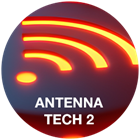 Note: The quiz is closed for eligibility of winning the prize. However, the quiz is continues to be active if you desire to take it for personal self-testing.
Note: The quiz is closed for eligibility of winning the prize. However, the quiz is continues to be active if you desire to take it for personal self-testing.
How well do you know antennas? Take our Antenna Tech 2 quiz to see how you measure up. The 25 questions cover antenna basics through more specialized antenna technology. We included some handy resources to help you.
We are giving away a handheld oscilloscope to the quiz taker who scored the most total points. Here’s how we score the quizzes:
Points are earned based on how many attempts it takes to earn a quiz score of 100% (multiple choice questions) plus the essay question answer:
|
1 attempt |
25 points |
|
2 attempts |
20 points |
|
3 attempts |
15 points |
|
4 or more attempts |
10 points |
|
Essay question (#5) |
0 to 5 points |
Winner of the Handheld Oscilloscope: karthickiot (173602) is the winner of the handheld oscilloscope with a total score of 25 (one attempt) + 2.75 (essay question) = 27.75.
See Terms and Conditions on contest.
Yageo Pulse Antenna Tech 2 Quiz
To earn the Antenna Quiz 2 Badge, score 100% on the quiz in any number of attempts and leave your feedback on the quiz as a comment.
In Collaboration with
Resources
- Yageo Pulse Embedded Antennas
- Yageo Pulse External/In-Building Antennas
- Yageo Pulse Vehicular Antennas
- Yageo Pulse IPD RF Components – LTCC
- Yageo Pulse Antenna Technology Review
- Yageo Pulse Ceramic Basics
- Yageo Pulse Antenna Products
- The Planar Inverted-F Antenna
Terms & Conditions
About the Sponsor
 Pulse, a YAGEO company, is a key element in a family of businesses that combine to create one of the largest passive electronic manufacturers in the world. Founded in 1956 in Redwood City, California and acquired by Yageo Corporation in 2018 Pulse has over 60 years of innovation experience and is a leader in technology, design and manufacturing. Our passive electronic components include power and networking magnetics, current sensing, cable harnesses, power supplies, antennas and connectors. Our global customer base include the market leaders in the Communications, Computing, Consumer, Industrial, IoT and Transportation segments. Our products can be found in a wide range of applications including hybrid and electric vehicles, 5G mobile network systems, smart grids, wearables, lighting, cell phones, datacenters, wireless charging, industrial automation equipment and security. For more information, click here.
Pulse, a YAGEO company, is a key element in a family of businesses that combine to create one of the largest passive electronic manufacturers in the world. Founded in 1956 in Redwood City, California and acquired by Yageo Corporation in 2018 Pulse has over 60 years of innovation experience and is a leader in technology, design and manufacturing. Our passive electronic components include power and networking magnetics, current sensing, cable harnesses, power supplies, antennas and connectors. Our global customer base include the market leaders in the Communications, Computing, Consumer, Industrial, IoT and Transportation segments. Our products can be found in a wide range of applications including hybrid and electric vehicles, 5G mobile network systems, smart grids, wearables, lighting, cell phones, datacenters, wireless charging, industrial automation equipment and security. For more information, click here.


Top Comments
-

rscasny
-
Cancel
-
Vote Up
0
Vote Down
-
-
Sign in to reply
-
More
-
Cancel
Comment-

rscasny
-
Cancel
-
Vote Up
0
Vote Down
-
-
Sign in to reply
-
More
-
Cancel
Children